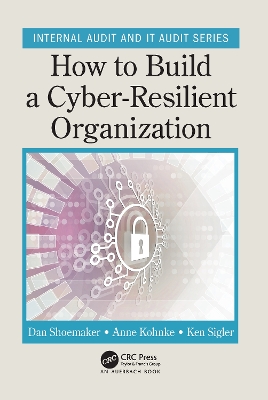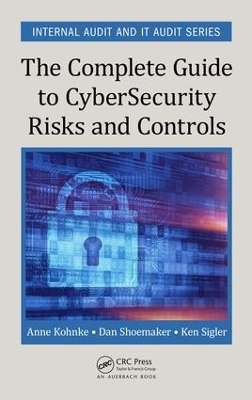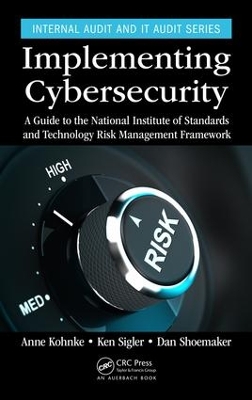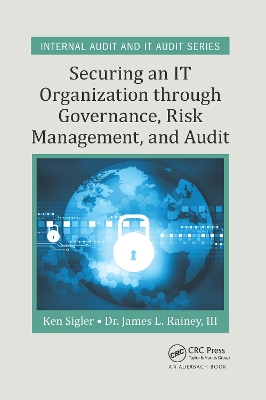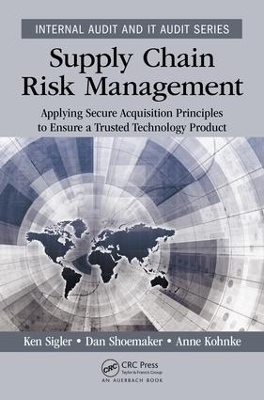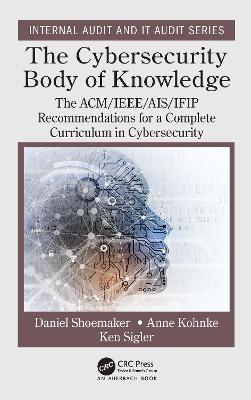Internal Audit and IT Audit
7 total works
How to Build a Cyber-Resilient Organization
by Dan Shoemaker, Anne Kohnke, and Ken Sigler
This book presents a standard methodology approach to cyber-resilience. Readers will learn how to design a cyber-resilient architecture for a given organization as well as how to maintain a state of cyber-resilience in its day-to-day operation. Readers will know how to establish a state of systematic cyber-resilience within this structure and how to evolve the protection to correctly address the threat environment. This revolves around the steps to perform strategic cyber-resilience planning, implementation and evolution. Readers will know how to perform the necessary activities to identify, prioritize and deploy targeted controls and maintain a persistent and reliable reporting system.
The Complete Guide to Cybersecurity Risks and Controls
by Anne Kohnke, Dan Shoemaker, and Ken E. Sigler
The book provides the complete strategic understanding requisite to allow a person to create and use the RMF process recommendations for risk management. This will be the case both for applications of the RMF in corporate training situations, as well as for any individual who wants to obtain specialized knowledge in organizational risk management. It is an all-purpose roadmap of sorts aimed at the practical understanding and implementation of the risk management process as a standard entity. It will enable an "application" of the risk management process as well as the fundamental elements of control formulation within an applied context.
Securing an IT Organization through Governance, Risk Management, and Audit
by Ken E. Sigler and III Rainey
Past events have shed light on the vulnerability of mission-critical computer systems at highly sensitive levels. It has been demonstrated that common hackers can use tools and techniques downloaded from the Internet to attack government and commercial information systems. Although threats may come from mischief makers and pranksters, they are more likely to result from hackers working in concert for profit, hackers working under the protection of nation states, or malicious insiders.
Securing an IT Organization through Governance, Risk Management, and Audit introduces two internationally recognized bodies of knowledge: Control Objectives for Information and Related Technology (COBIT 5) from a cybersecurity perspective and the NIST Framework for Improving Critical Infrastructure Cybersecurity (CSF). Emphasizing the processes directly related to governance, risk management, and audit, the book provides details of a cybersecurity framework (CSF), mapping each of the CSF steps and activities to the methods defined in COBIT 5. This method leverages operational risk understanding in a business context, allowing the information and communications technology (ICT) organization to convert high-level enterprise goals into manageable, specific goals rather than unintegrated checklist models.
The real value of this methodology is to reduce the knowledge fog that frequently engulfs senior business management, and results in the false conclusion that overseeing security controls for information systems is not a leadership role or responsibility but a technical management task. By carefully reading, implementing, and practicing the techniques and methodologies outlined in this book, you can successfully implement a plan that increases security and lowers risk for you and your organization.
A Guide to the National Initiative for Cybersecurity Education (NICE) Cybersecurity Workforce Framework (2.0)
by Dan Shoemaker, Anne Kohnke, and Ken Sigler
A Guide to the National Initiative for Cybersecurity Education (NICE) Cybersecurity Workforce Framework (2.0) presents a comprehensive discussion of the tasks, knowledge, skill, and ability (KSA) requirements of the NICE Cybersecurity Workforce Framework 2.0. It discusses in detail the relationship between the NICE framework and the NIST’s cybersecurity framework (CSF), showing how the NICE model specifies what the particular specialty areas of the workforce should be doing in order to ensure that the CSF’s identification, protection, defense, response, or recovery functions are being carried out properly.
The authors construct a detailed picture of the proper organization and conduct of a strategic infrastructure security operation, describing how these two frameworks provide an explicit definition of the field of cybersecurity. The book is unique in that it is based on well-accepted standard recommendations rather than presumed expertise. It is the first book to align with and explain the requirements of a national-level initiative to standardize the study of information security. Moreover, it contains knowledge elements that represent the first fully validated and authoritative body of knowledge (BOK) in cybersecurity.
The book is divided into two parts: The first part is comprised of three chapters that give you a comprehensive understanding of the structure and intent of the NICE model, its various elements, and their detailed contents. The second part contains seven chapters that introduce you to each knowledge area individually. Together, these parts help you build a comprehensive understanding of how to organize and execute a cybersecurity workforce definition using standard best practice.
Supply Chain Risk Management
by Ken Sigler, Dan Shoemaker, and Anne Kohnke
The book presents the concepts of ICT supply chain risk management from the perspective of NIST IR 800-161. It covers how to create a verifiable audit-based control structure to ensure comprehensive security for acquired products. It explains how to establish systematic control over the supply chain and how to build auditable trust into the products and services acquired by the organization. It details a capability maturity development process that will install an increasingly competent process and an attendant set of activities and tasks within the technology acquisition process. It defines a complete and correct set of processes, activities, tasks and monitoring and reporting systems.
The Cybersecurity Body of Knowledge
by Daniel Shoemaker, Anne Kohnke, and Ken Sigler
The Cybersecurity Body of Knowledge explains the content, purpose, and use of eight knowledge areas that define the boundaries of the discipline of cybersecurity. The discussion focuses on, and is driven by, the essential concepts of each knowledge area that collectively capture the cybersecurity body of knowledge to provide a complete picture of the field.
This book is based on a brand-new and up to this point unique, global initiative, known as CSEC2017, which was created and endorsed by ACM, IEEE-CS, AIS SIGSEC, and IFIP WG 11.8. This has practical relevance to every educator in the discipline of cybersecurity. Because the specifics of this body of knowledge cannot be imparted in a single text, the authors provide the necessary comprehensive overview. In essence, this is the entry-level survey of the comprehensive field of cybersecurity. It will serve as the roadmap for individuals to later drill down into a specific area of interest.
This presentation is also explicitly designed to aid faculty members, administrators, CISOs, policy makers, and stakeholders involved with cybersecurity workforce development initiatives. The book is oriented toward practical application of a computing-based foundation, crosscutting concepts, and essential knowledge and skills of the cybersecurity discipline to meet workforce demands.
Dan Shoemaker, PhD, is full professor, senior research scientist, and program director at the University of Detroit Mercy’s Center for Cyber Security and Intelligence Studies. Dan is a former chair of the Cybersecurity & Information Systems Department and has authored numerous books and journal articles focused on cybersecurity.
Anne Kohnke, PhD, is an associate professor of cybersecurity and the principle investigator of the Center for Academic Excellence in Cyber Defence at the University of Detroit Mercy. Anne’s research is focused in cybersecurity, risk management, threat modeling, and mitigating attack vectors.
Ken Sigler, MS, is a faculty member of the Computer Information Systems (CIS) program at the Auburn Hills campus of Oakland Community College in Michigan. Ken’s research is in the areas of software management, software assurance, and cybersecurity.
